From hairy furniture to silk lamps, sustainable design reigns at PAD London
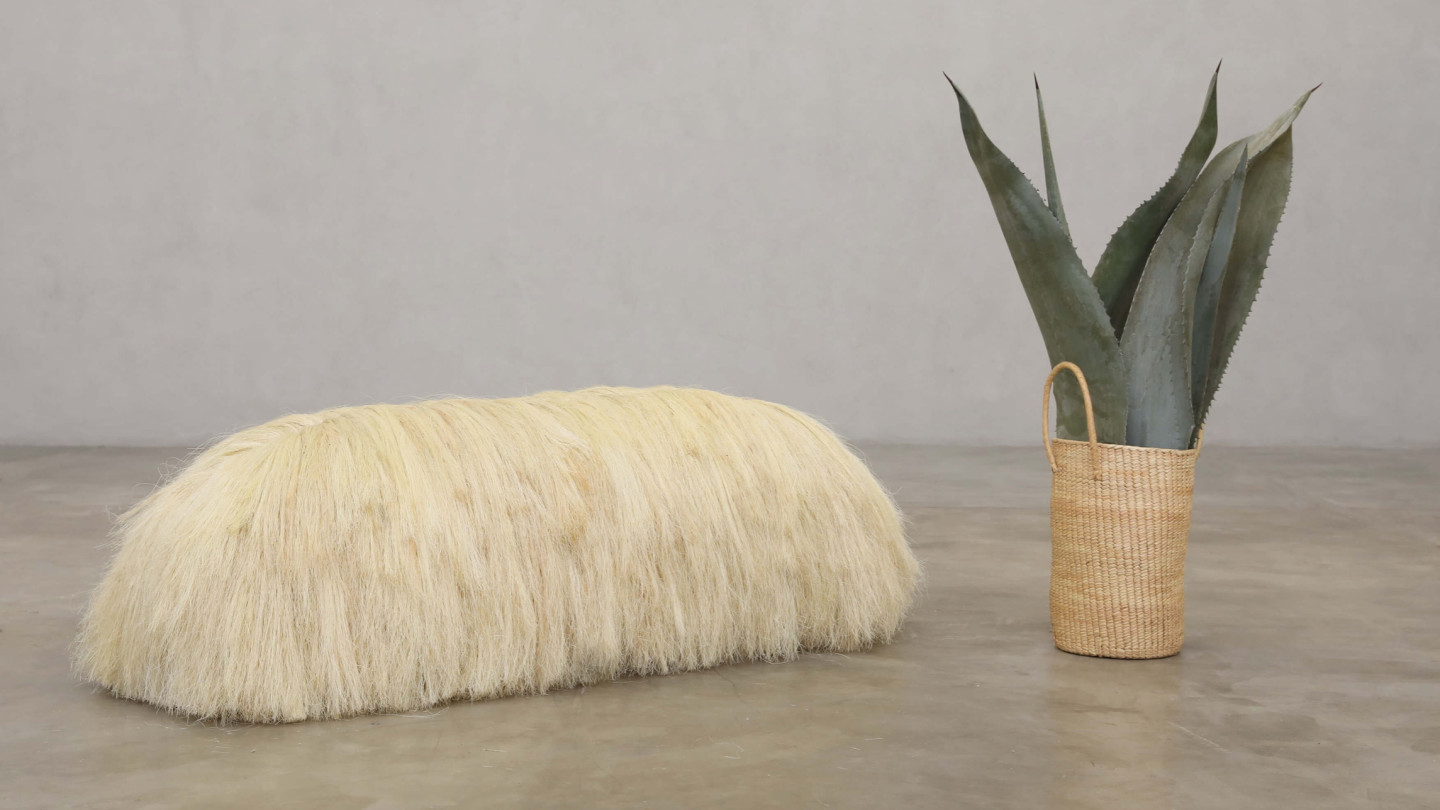
Roula Khalaf, Editor of the FT, selects her favourite stories in this weekly newsletter.
When Fernando Laposse returned to the Mexican village he had known since his childhood to source maize leaves for a design project, he discovered that this staple corn was no longer growing in the mountains around Tonahuixtla. Years of industrial farming with chemicals, introduced to improve productivity, had resulted in devastating soil erosion. The place was a ghost town — most of its indigenous community had been obliged to find work in the US. Those who remained had, however, thanks to a small government grant, begun to reintroduce traditional, pre-Hispanic terracing and had planted 200-300 agaves.
This fleshy, spiky-leaved succulent was the only fast-growing desert plant able to cope with the climate and terrain and provide root systems to retain soil and water and act as a barrier against the wind. “There was no sustainable plan as to what would happen after the two-year funding stopped,” says the engagingly energetic London-based Laposse. “It was time to change my life.” That was 2015.
Now there are 80,000 agaves, and the hairy furniture he designs from sisal, the agaves’ fibre, is on show at this year’s PAD London fair in Berkeley Square (October 10-16). Sarah Myerscough Gallery presents Laposse’s black Sisal Pup, no less companionable or endearing than its golden canine counterparts, the fibres for this bench dyed with native indigo, zapote husks and cochineal.
Laposse is one of a new generation of designers and craftsmen represented at PAD who have shifted their focus to sustainability — the use of responsibly sourced materials or the reuse of existing ones. Where skilled artisans of the luxury goods trades once worked with precious and exotic ivory, tortoise-shell, coral, shagreen (shark skin) and boldly figured hardwoods imported from the New World, their successors exploit the potential of discarded plastic bottles, industrial foam, stone offcuts and metal aggregates or byproducts such as rice straw, sawdust or feathers from the food industry. Their wood is sourced locally from storm-felled trees. The language of their lexicon is revealing; fragments are “reconciled”, materials recycled, upcycled or repurposed and, in every sense, revalued.
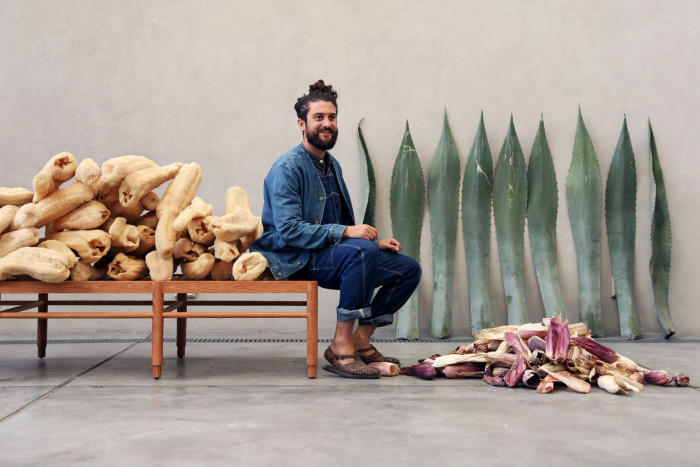
In fact, Laposse has even taken sustainability a step further, helping to provide a positive future for the village. He devised an ingenious community project, addressing both land regeneration and social reparation, around sisal. Once a thriving industry used to make ropes, carpets and fishing nets, its production halted with the introduction of plastics. A product designer by training, the 26-year-old began to explore its character and develop new techniques of hand-knotting and weaving the harvested fibre. Hairy, animalistic shapes began to emerge.
“It is how the material behaves,” he says. “It naturally forms organic rounded shapes, like animals and the dwellings they create.” Thus his combed hairy furniture was born, the planting, harvesting and crafting of its sisal providing full-time employment for 12 families.
A hundred and fifty miles away in Mexico City, a few years before Laposse changed his life, Thierry Jeannot began treating recycled PET plastic bottles as if they were crystal to make the grandest of 18th-century-style chandeliers. This paradox questioned both luxury and classicism. His current Transmutations light fittings (Ammann Gallery) ever more imaginatively combine recycled plastic bottle parts which have been melted, dyed and deformed into sputniks of radiating colour.
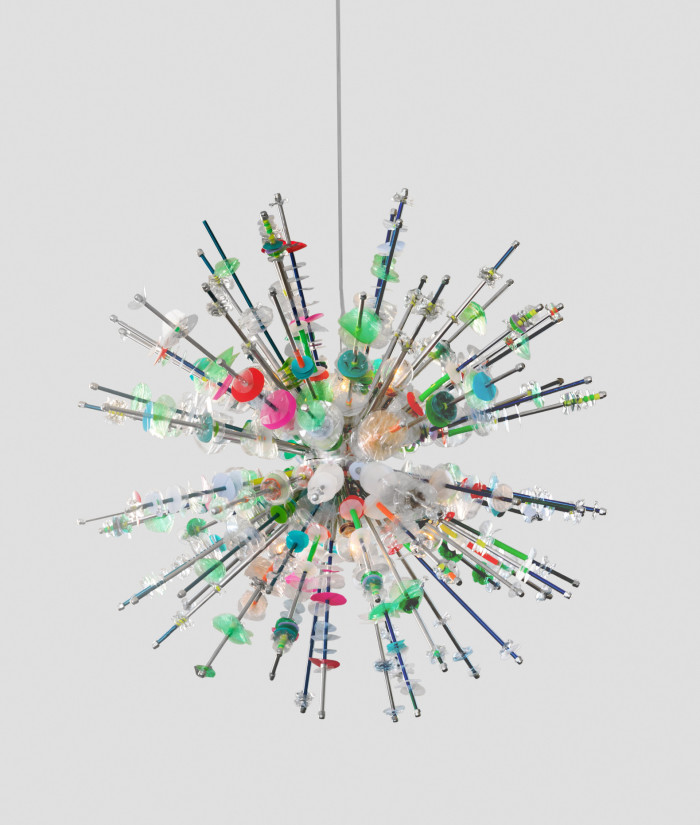
There are plenty of other sustainable designs to be seen at PAD. Zavier Wong describes himself as “gardening in an industrial wilderness”. The Eindhoven-based maker likes to work with reclaimed and unconventional materials that invite transformation. “I use the pairing of materials that are perceived as either precious or disposable to generate a new understanding of value,” he says. In the case of his Revalued Foam table, these are EPS and PU industrial foams in bright colours and gold leaf (Priveekollektie). In Beirut, Tessa and Tara Sakhi work with a team of local craftsmen to produce moulded tables where the offcuts of semi-precious stones and aggregates of metal powder found in the factories surrounding their studio are set in resin (Galerie Gosserez).
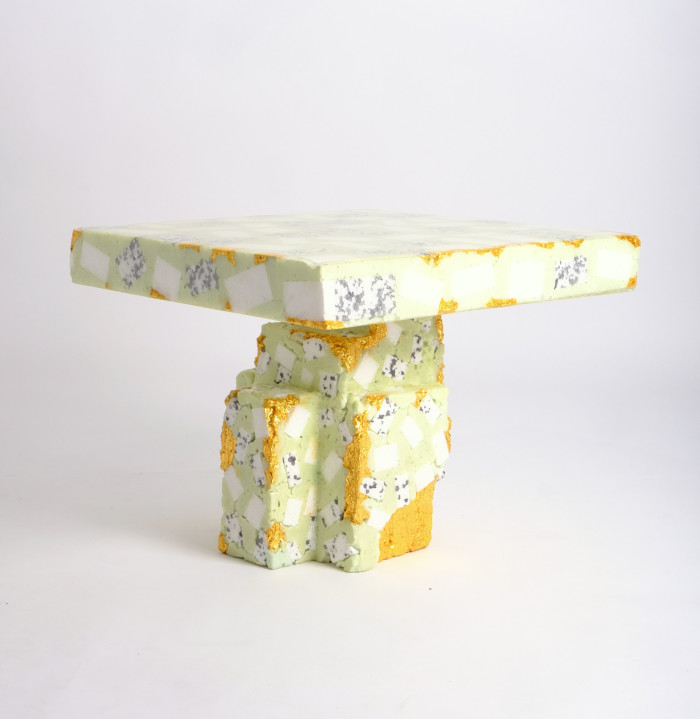
This ingenuity extends to novel ways of re-engaging with the natural world. Feathers are the stock-in-trade of Julien Vermeulen, one of France’s last plumassiers. This master craftsmen developed new techniques of dyeing, steaming, shaping and gluing recycled feathers which would otherwise be destroyed. His huge black wave-patterned wall panels exploit the material’s nuance and texture and the play of light and shade across their surface (Maison Parisienne).

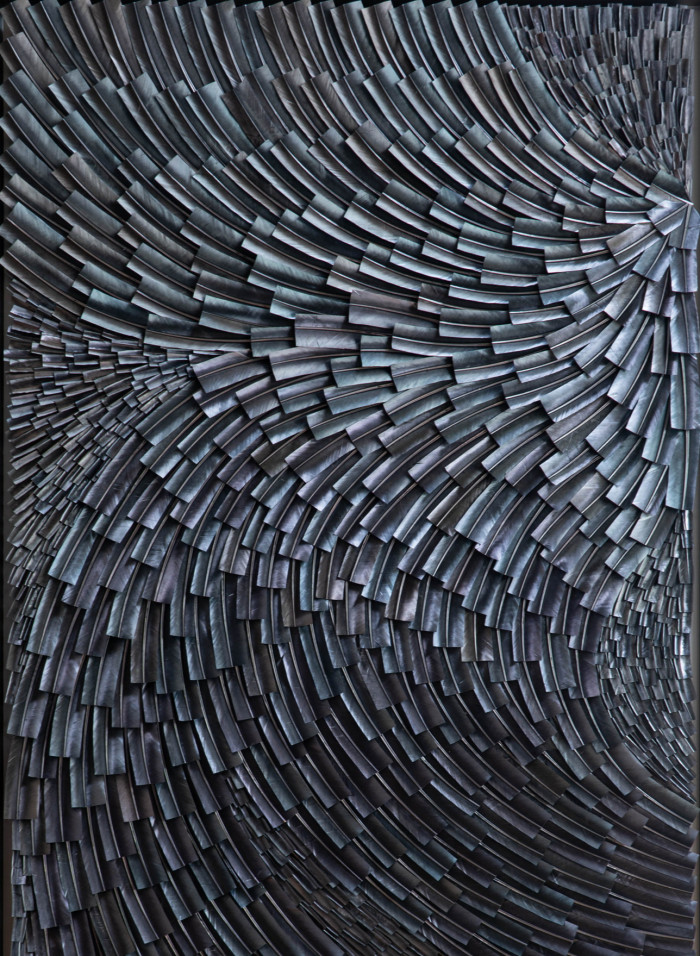
Perhaps the most unexpected collaboration represented here is between designer, artisan and silkworm. Diane de Kergal (Galerie Gosserez) designs minimalist trees of light — light sculptures with cloud- or cocoon-shaped canopies carried on elegant basswood stems. These canopies are obligingly formed by silkworms depositing their surprisingly strong silk yarn and sericin over her latex-covered plaster casts. From these, the membranes are carefully harvested. “I wanted to find a material that would capture and vibrate light,” the French designer explains. “It was very important to me that I should find something organic.”
Since her drawn forms resembled cocoons, a friend at the École Boulle suggested that she contact the entrepreneurial Clara Hardy at Sericyne, the only manufactory in France producing non-woven silk through a newly patented technique. This enterprise is reviving sericulture in the historic silk-production region of the Cévennes, rehabilitating an organic ecosystem by training silkworm breeders and planting mulberry trees on whose leaves the silkworm feed. The lamp stands, basswood branches echoing de Kergal’s designs, are sourced from the Brittany forest of ARCA workshop’s founder Steven Leprizé and meticulously stripped of bark and polished.
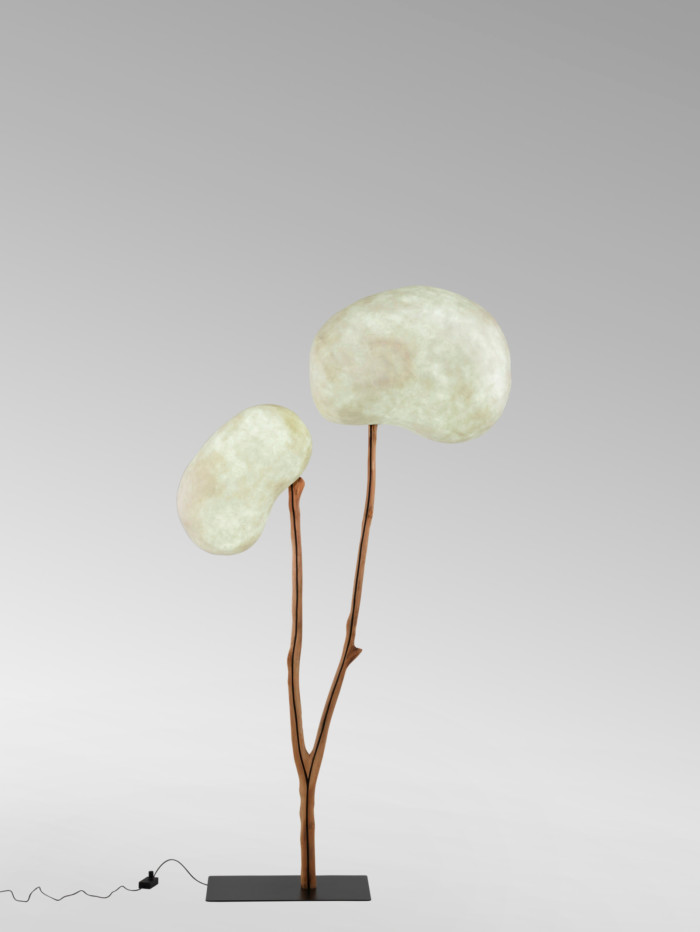
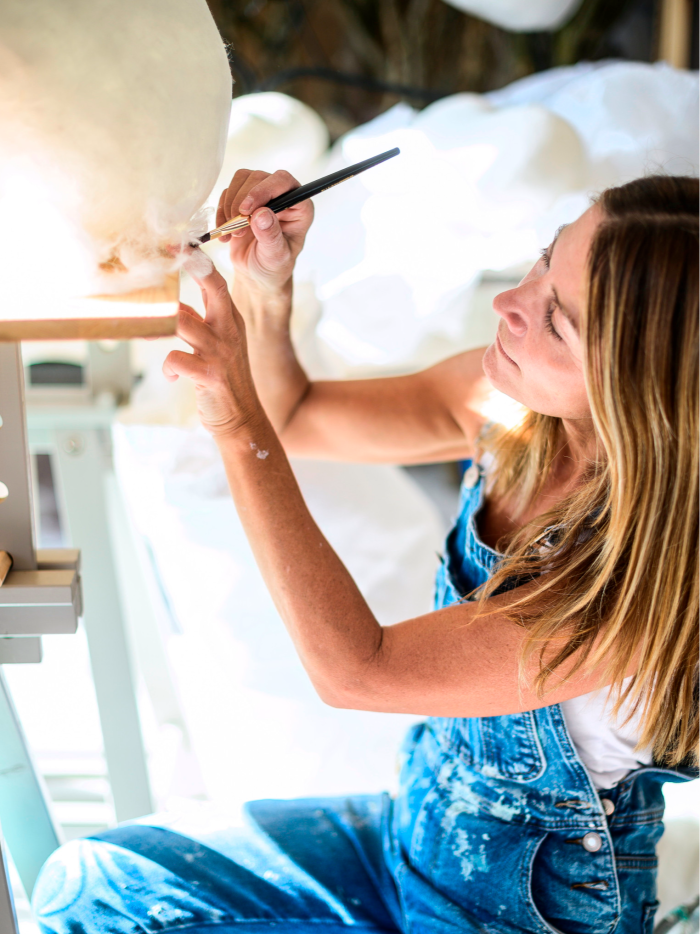
En masse, the Emergence lights suggest a surreal lunar forest. When turned off, the cloudy lamps seem formed of solid matter. When lit, the intertwined threads of silk of these cocoons — a promise of metamorphosis — become near-transparent. “I am an urban woman, but this project is my dialogue with nature,” says de Kergal, smiling. “There is nothing more beautiful in the world than a silkworm becoming a butterfly.”
October 10-16, padesignart.com
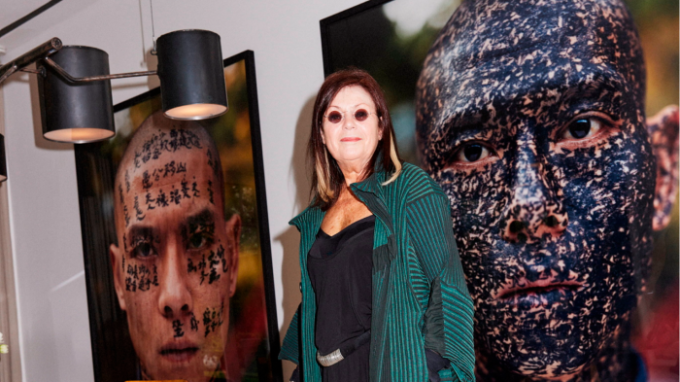
Comments